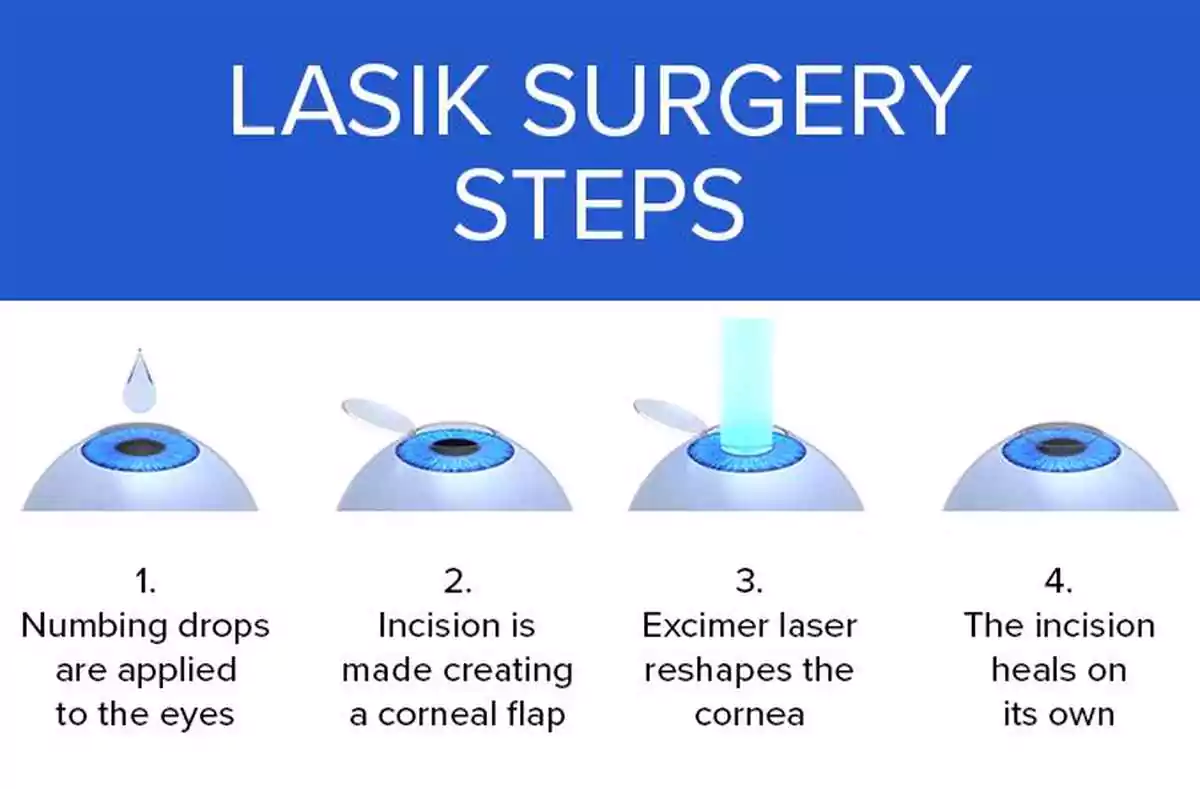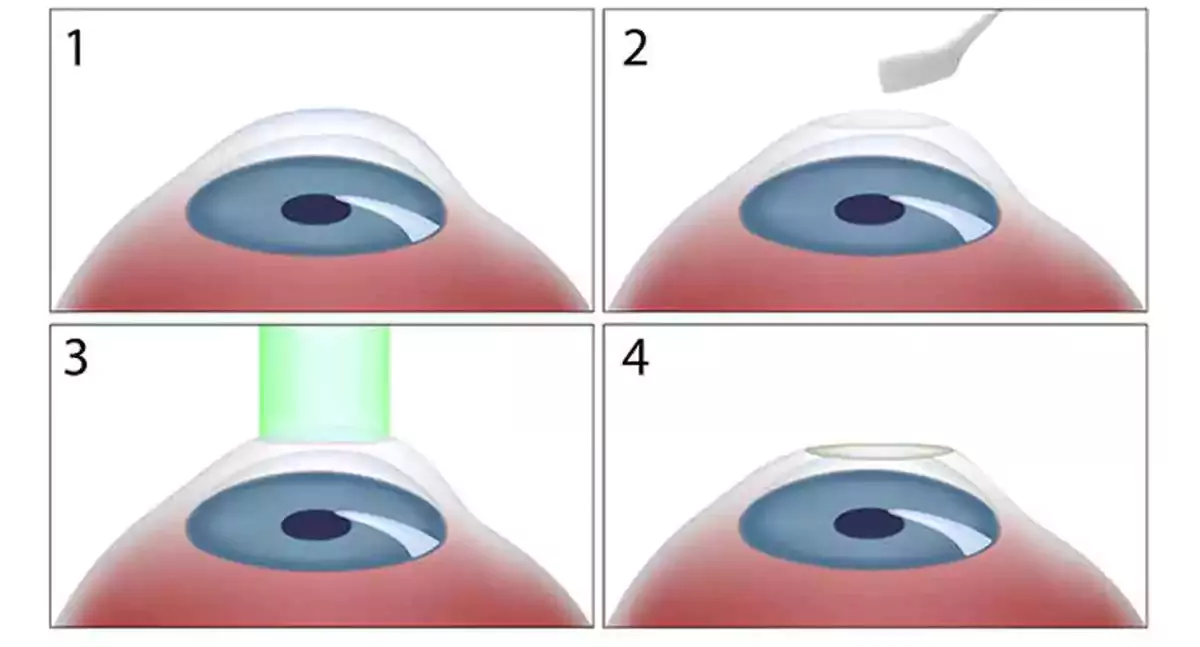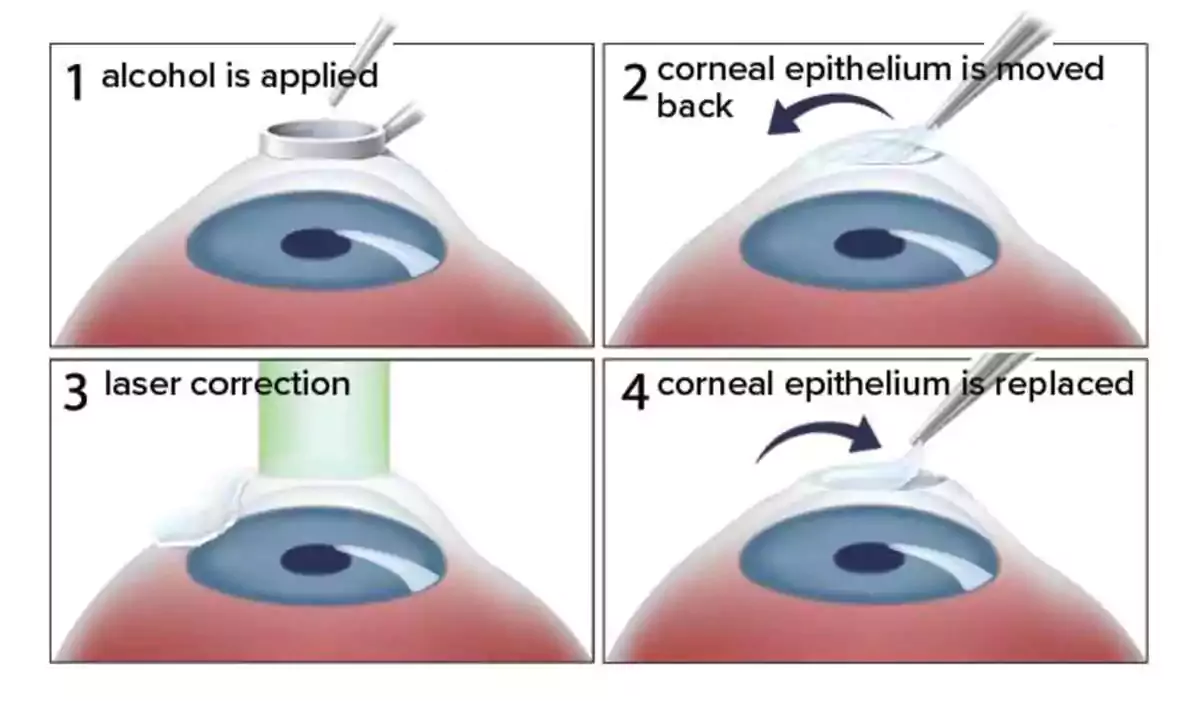What Is a Refractive Surgeon?
Do you know which type of surgeons have the expertise to fix your eyesight?
Welcome to the world of refractive surgery.
From correcting nearsightedness to reducing dependence on glasses, learn about the specialized surgeons who can improve your vision.
Who are refractive surgeons?
Refractive surgeons specialize in correcting vision problems and assisting individuals in achieving improved clarity and sharpness of eyesight.
Refractive surgery addresses common refractive errors such as nearsightedness (myopia), farsightedness (hyperopia), and astigmatism.
A refractive surgeon can reshape the eye’s clear front surface cornea to enhance how light enters and focuses on the retina.
This precise reshaping enables them to correct vision problems effectively, potentially reducing or eliminating the need for corrective lenses.
What training do refractive surgeons need?
To become a refractive surgeon, extensive training and education are needed.
After completing medical school, aspiring individuals must pursue an ophthalmology residency program focusing on diagnosing and treating eye conditions.
This residency typically lasts around four years and involves hands-on training and clinical experience in various aspects of ophthalmology.
After completing a residency program, those interested in specializing in refractive surgery can pursue additional fellowship training.
These fellowships focus on refractive surgery and provide in-depth knowledge and experience in performing procedures like LASIK, PRK, and other vision correction techniques.
Fellowship programs in refractive surgery offer one to two years of comprehensive training.
Afterward, they may pursue additional fellowship training in refractive surgery to gain in-depth knowledge and expertise.
This fellowship training allows them to refine their skills in performing refractive procedures and staying up-to-date with the latest advancements in the field.
Types of common refractive surgeries
Various procedures are available to correct vision problems and improve visual acuity.
1. LASIK (Laser-Assisted in Situ Keratomileusis)
LASIK involves using a laser or blade to create a thin flap on the cornea.
The underlying corneal tissue is then reshaped with another laser to correct refractive errors.
Following that, the flap is meticulously repositioned to promote speedy recovery and minimize any discomfort that the patient may experience.
2. PRK (Photorefractive Keratectomy)
PRK is similar to LASIK in that it’s also a refractive surgery that corrects vision problems by reshaping the cornea.
However, instead of creating a corneal flap like in LASIK, this surgery involves removing the epithelium or the outer layer of the cornea to access the underlying corneal tissue.
The cornea is then reshaped using an excimer laser to correct refractive errors.
3. LASEK (Laser Epithelial Keratomileusis)
LASEK is a variation of PRK that combines the benefits of both LASIK and PRK procedures.
During LASEK, an alcohol solution is applied to loosen the cornea’s outer layer.
The cornea is then reshaped using an excimer laser before a protective contact lens is placed for healing.
4. Implantable lenses
In cases where laser refractive surgery may not be recommended, refractive surgeons may recommend implantable lenses.
These lenses, also known as phakic intraocular lenses (IOLs), are surgically implanted inside the eye, either in front of the natural lens or between the natural lens and the iris.
Aside from these, there are other types of refractive surgeries available, such as SMILE (Small Incision Lenticule Extraction) and Refractive Lens Exchange (RLE).
These procedures may be recommended based on one’s specific vision needs.
What to know if you’re considering refractive surgery
If you’re considering refractive surgery to improve your vision, here’s what you need to look out for and expect:
First – choose a qualified refractive surgeon
Choosing a qualified refractive surgeon is crucial.
According to protocol, a surgeon should assess your needs and evaluate your eye health before recommending the best procedure for you.
When in doubt, always look for board-certified surgeons with specialized training and a successful track record.
Identifying which refractive surgery you need
The best refractive surgery option depends on factors like your refractive error, corneal thickness, eye health, and lifestyle.
Your surgeon should explain the available options, discuss the advantages and disadvantages, if any, and help you make an informed decision.
Pre-surgical evaluation basics
Before refractive surgery, you should undergo a detailed evaluation.
This includes a comprehensive eye exam to assess your vision, eye health, and suitability for the surgery.
Additional tests may be done to check your prescription stability and ensure you meet the requirements for the chosen procedure.
Overview of the refractive surgery procedure
Your surgeon should explain the procedure, including what to expect during surgery and any required preparations beforehand.
Post-operative care
Proper post-operative care after refractive surgery is crucial for visual recovery.
Your surgeon may recommend using prescribed eye drops, avoiding strenuous activities, rubbing your eyes, and scheduling follow-ups.
Does insurance pay for refractive surgery?
Insurance coverage for refractive surgery typically depends on the insurance provider and the particular terms of your policy.
While some insurance plans may offer a range of refractive surgery coverage options, others may consider it an elective procedure and not provide coverage.
Here are some important factors to consider:
Whether the surgery is a medical necessity
Insurance companies generally classify refractive surgery as an elective procedure since it is performed to improve visual acuity rather than to treat a medical condition.
As a result, they may require evidence of medical necessity to provide coverage.
For instance, your insurance may be more likely to cover the procedure if your refractive error significantly affects your daily life or employment.
Does your policy cover vision and medical insurance?
Check if your insurance policy includes vision or medical coverage, as this can impact the likelihood of coverage for refractive surgery.
Vision insurance plans often cover routine eye exams and corrective lenses but may exclude refractive surgery.
On the other hand, medical insurance plans may consider refractive surgery coverage based on the medical necessity criteria.
FSAs or HSAs
It’s worth noting that if your employer offers an FSA or HSA, these accounts can be used to cover eye care expenses with pre-tax dollars.
This may provide a potential avenue to offset refractive surgery costs.
To start with, review the specifics of your insurance policy to determine if your insurance covers refractive surgery.
This includes coverage limitations, exclusions, and any requirements for pre-authorization or referrals.
You may also contact your insurance provider directly to discuss your coverage options for refractive surgery and inquire about any necessary documentation or medical criteria.
Shedding light on refractive surgeons
Refractive surgeons can help improve your vision and reduce your reliance on glasses or contact lenses.
They’re capable of performing several refractive surgeries, such as LASIK, PRK, LASEK, and implantable lenses.
Each procedure has distinctive qualities and advantages, giving refractive surgeons a wide array of treatments to choose from depending on the candidate.
If you’re contemplating refractive surgery, there are a few things to consider.
Find out about the qualifications of your refractive surgeon, be informed on the types of surgeries available, and make sure you get proper pre-and post-operative care to ensure full visual recovery with the best outcome.
Insurance coverage for refractive surgery varies from policy to policy, so reviewing yours and consulting with your provider is essential.
We wish you good luck in your journey towards better vision!

Written by:
Angie Garcia

















